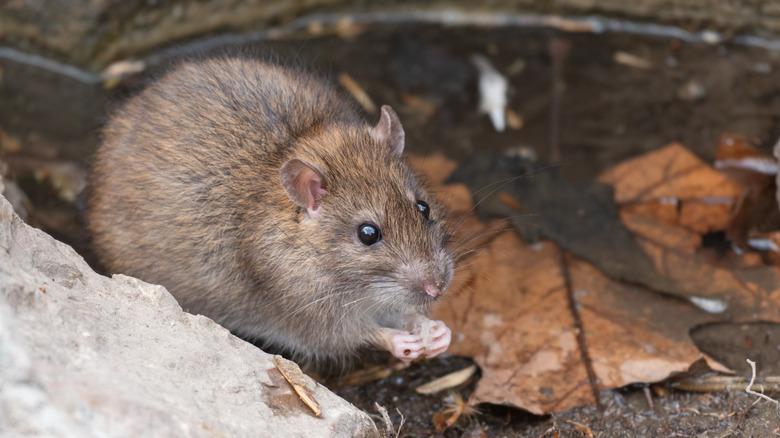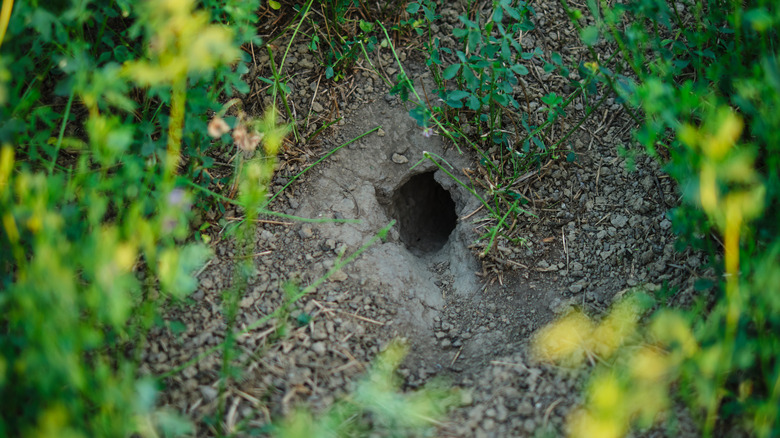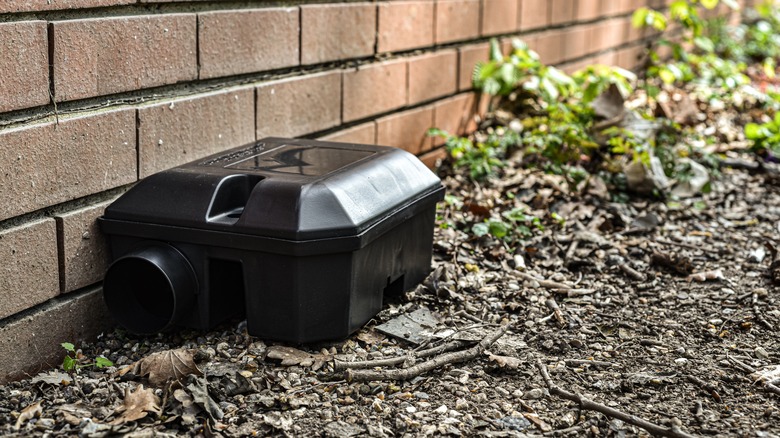How To Identify And Deal With Mouse Holes In Your Yard
If you notice random holes in your yard or garden, you might be dealing with an underground mouse network. Mice can dig underground, creating intricate tunnel systems that link various entrance holes. The tunnels serve multiple purposes, including food storage and nesting areas, and they provide mice with a hidden network for moving around safely. It's a stealthy operation because mice are nocturnal creatures. You won't easily see them scampering around, but there are other ways, aside from the holes, to confirm their presence — think of signs of scurrying and droppings.
For various reasons, you should be concerned about mice's presence in your yard or garden. Mice have a knack for nibbling through anything they find, and your garden is essentially a buffet for them. They can decimate your plants, and if they find their way into your home, they can get into your food supplies. But the trouble doesn't stop there. Mice can also gnaw on insulation and wiring, which poses a risk of structural damage to your property. It can lead to electrical failures or, in worst-case scenarios, even house fires.
But perhaps the most disconcerting issue is the health risk these rodents bring along. They can act as vectors for a variety of diseases. In short, those little holes in your yard are more than just a landscaping problem — they can be entry points for significant health risks.
Identifying mouse holes and other signs of activity
To get a clearer picture of what you're dealing with, examine the characteristics of the holes you find. Mice carefully chew through soil and other materials, usually leaving behind a cleanly cut hole. But don't expect them to make spotting these entrances easy. They sometimes block their holes with various types of debris — think small stones and twigs. This serves a dual purpose: it keeps predators out and also maintains a low profile.
To make identification a bit trickier, mice also connect their tunnels to the ground through grass and other areas of dense vegetation. Holes aren't the only clues these critters leave behind. Gnaw marks, which you might find on wood, plastic, or even metal surfaces, are another sign. They're a telltale sign that mice are searching for food or nesting materials. Nests, usually made from dried plant debris or other materials, and ripped paper packaging in the garbage area also indicate a mouse problem.
Sound can be another clue. Mice aren't completely silent; you might hear scurrying sounds, especially during the quiet of the night. Listen for these noises under your floors and within the walls. Furthermore, don't underestimate the instincts of your pets. They can often sense when mice are present, becoming more alert or anxious. They might even focus on a specific area where they sense mouse activity. Lastly, look out for mouse droppings. They are usually dark in color and often found near feeding areas that mice frequent.
Eradicating mouse holes and preventing future infestations
You've identified the holes, so what next? First, fill them. This is often a temporary fix, but if you're early in the game with only a couple of holes, this action could encourage the mice to go somewhere else. If you suspect your garden is the main attraction, consider placing a barrier around it. Ultrasonic repellents can deter mice through unpleasant high-frequency sound waves, while sheet metal barriers physically block their entry. Both options can be effective at keeping your garden mouse-free.
Moving on to housekeeping. Mice love food — seeds, fruits, and vegetables are their favorites. Therefore, removing or properly storing anything that could attract them is essential. Ensure your compost pile is well-covered or in a sealed container. Otherwise, it becomes a free dining hall for rodents.
If preventive steps haven't solved the issue, then traps come into play. You have options here, from traditional snap traps that kill the mice instantly to humane traps that capture them alive, allowing you to relocate them. Pick the one that aligns with your approach to pest control. If you've tried all these steps and still face an issue, it's time to call in the professionals. Pest control companies can provide more extensive solutions and identify other potential infestation risks in your yard.


